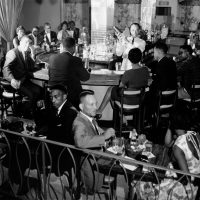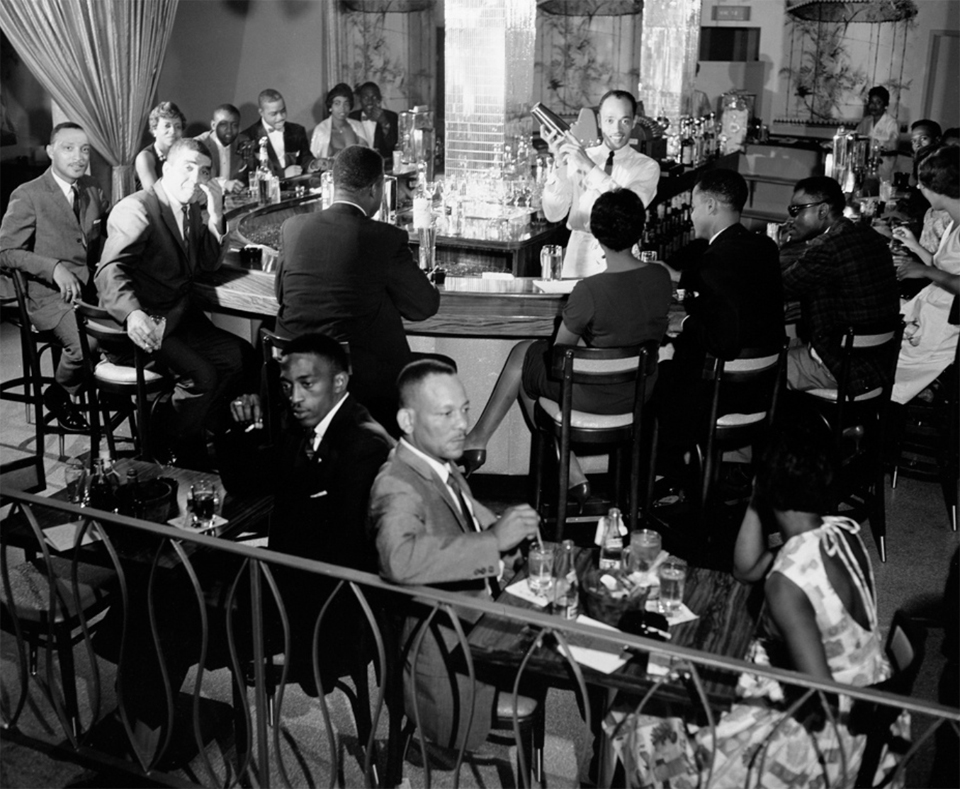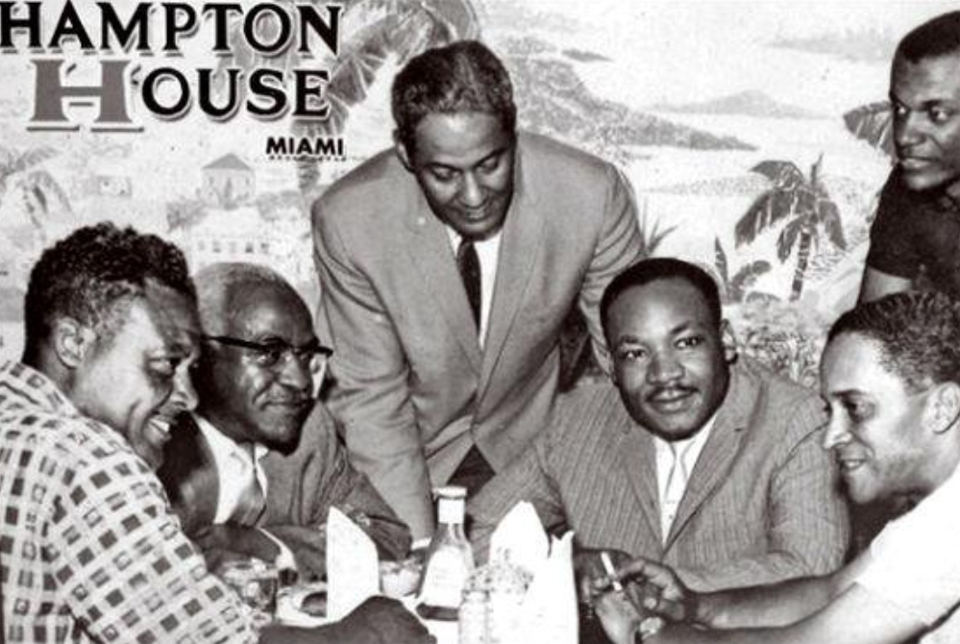The Historic Hampton House: Most Important Nexus in African American History


A typical night at the Hampton House. Circa 1958. Courtesy of Historic Hampton House Community Trust.

Dr. Martin Luther King Jr. at the Hampton House. Circa 1961. Courtesy of Historic Hampton House Community Trust.
In the 1950s and ’60s, when Miami Beach was still segregated and African-Americans were not allowed to sleep there, the Hampton House Motel was an oasis for African-American leaders, activists, performers, and professional athletes, including Dr. Martin Luther King Jr., Sammy Davis Jr., Duke Ellington, Nancy Wilson, Louis Armstrong, LaVern Baker, Malcolm X, and Muhammad Ali.
In the beginning of the 21st century, a group led by Dr. Enid Pinkney began a more than 15-year journey to raise funds, make plans, and oversee the restoration of the Hampton House, which has now been designated a historic site called “The Historic Hampton House.” With an assortment of grants and a small army of people from the Brownsville community, faculty and students from Florida International University and the University of Miami, plus other volunteers, The Historic Hampton is once more a source of indelible memories and an inspiration to young and old.
In 1954, the Booker Terrace Motel opened in Miami, Florida, to satisfy the city’s growing need for Black lodging facilities. It was renamed the Hampton House Motel in 1961, and operated for a total of just over 20 years. During that short period, the motel played an important role as the most convenient location with public accommodations and lodging available to Black travelers visiting Miami via Miami International Airport. After the passage of the Civil Rights Act of 1964, however, the Hampton House lost much of its core clientele and closed in 1976.
Once described as the “Jewel of Black Miami,” the Hampton House Motel was a unique and important site. The Hampton House was among the most modern and upscale facilities available to Blacks in Miami before desegregation. And in an era when hospitals, schools, and beaches were segregated, the Hampton House was open to people of all races. Furthermore, it was a center of local and national political, civic, and cultural activity. One only needs to speak to people who visited the hotel during its years of operation to understand how much the swirl at the Hampton House captured and inspired imaginations.
In February, 2018, in the hotel room at the Historic Hampton House where Muhammad Ali used to stay in the early 1960s and in the room where Dr. Martin Luther King, Jr used to stay, we recorded video interviews with people who grew up in the Brownsville area and were either patrons of the Hampton House or shunned it.
The videos below are organized by topic and run between 30 seconds and 7 minutes. Click on any video. You must be connected to the Internet to view the videos.
DR. ENID CURTIS PINKNEY: 10:27 min.
DR. ENID CURTIS PINKNEY: 2:05 min.
WINSTON SCOTT: 1:06 min.
Introduction to Winston Scott: Astronaut & Musician. 1:06 min.
WINSTON SCOTT: 0:27 sec.
As a teenage musician, were you aware of the Hampton House in Brownsville?
WINSTON SCOTT: 1:21 min.
Given that many of the most important people in African-American history stayed or played at the Hampton House, did you encounter any major celebrities when you were there?
KHALILAH ALI: 4:04 min.
DR. WALTER T. RICHARDSON: 4:39 min.
DR. WALTER T. RICHARDSON: 1:16 min.
DR. WALTER T. RICHARDSON: 1:39 min.
DR. WALTER T. RICHARDSON: 4:57 min.
MARY HYLOR: 1:28 min.
MARY HYLOR: 2:24 min.
MARY HYLOR: 0:56 sec.
PATRICIA THOMAS: 2:03 min.
PATRICIA THOMAS: 1:50 min.
DR. DOROTHY JENKINS FIELDS: 6:56 min.
DR. DOROTHY JENKINS FIELDS: 4:59 min.
DR. DOROTHY JENKINS FIELDS: 5:23 min.
DR. DOROTHY JENKINS FIELDS: 1:42 min.
DR. DOROTHY JENKINS FIELDS: 6:02 min.
DOROTHY ROSS SMITH: 3:47 min.
DOROTHY ROSS SMITH: 1:06 min.
DOROTHY ROSS SMITH: 1:06 min.
DOROTHY ROSS SMITH: 1:06 min.
DOROTHY ROSS SMITH: 1:06 min.
NEAL ADAMS JR: 1:07 min.
NEAL ADAMS JR: 2:40 min.
NEAL ADAMS JR: 1:57 min.
NEAL ADAMS JR: 1:06 min.
EARLENE DONNA ADAMS: 0:17 sec.
EARLENE DONNA ADAMS: 2:55 min.
EARLENE DONNA ADAMS: 0:42 sec.


